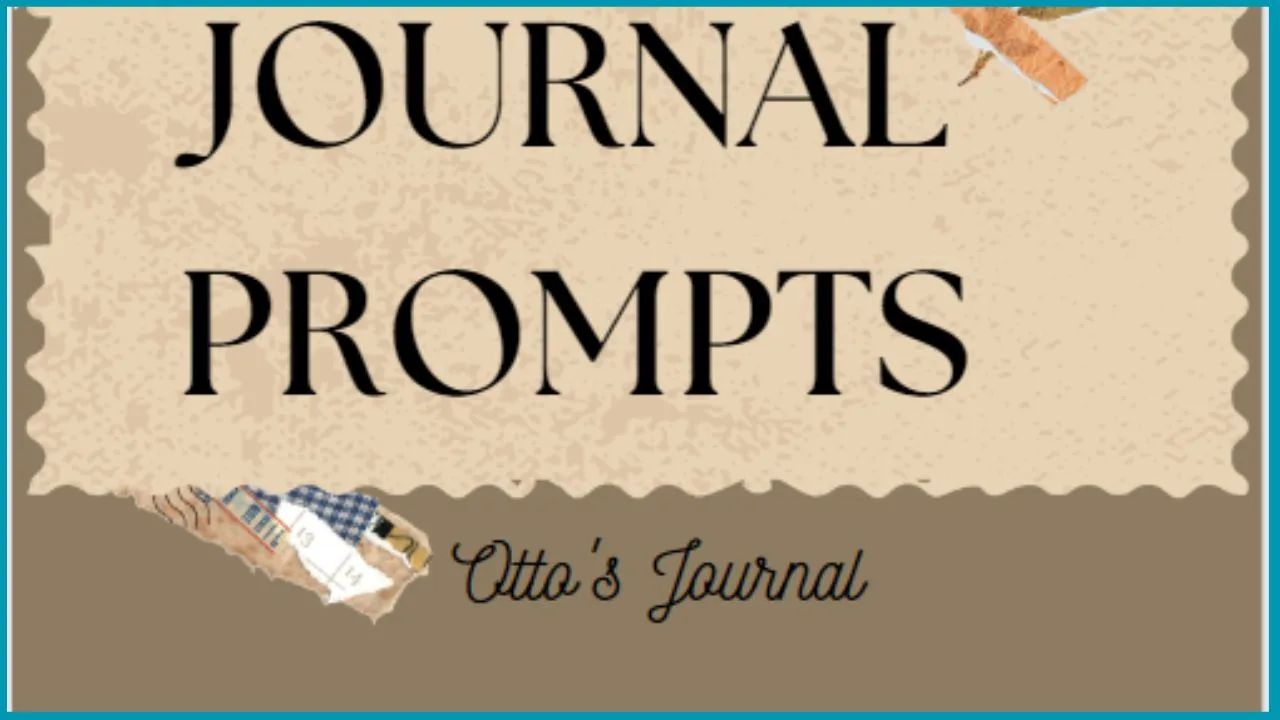Nature journaling is a way to connect with nature, reflect on experiences, and appreciate the world around us. It is a practice that has been popular for centuries, with famous authors such as Henry David Thoreau and Annie Dillard using it to explore the natural world. Nature journaling involves recording observations, thoughts, and feelings about the environment, and can be done in a variety of ways, from writing to drawing to photography. In this blog post, I will share with you 65 nature journal prompts to help you get started on your nature journaling journey.
One way to get started with nature journaling is to use prompts, which can help spark creativity and provide structure for those new to the practice. There are a variety of nature journal prompts available, from simple observation exercises to more reflective prompts that encourage deeper connection with the natural world. By using prompts, individuals can explore different aspects of nature and gain a greater appreciation for the world around them.
Getting Started with Nature Journaling
Nature journaling is a great way to connect with nature and record your experiences. Whether you’re a beginner or an experienced journaler, there are a few things to keep in mind when getting started.
Choosing Your Tools and Materials
Before you begin, it’s important to choose the right tools and materials for your nature journal. Some popular options include pens, pencils, and colored pencils. Pencils are great for sketching and shading, while pens are better for detailed drawings and writing. Colored pencils are a good choice for adding color to your sketches.
When selecting materials, consider the environment in which you’ll be journaling. If you’ll be outdoors, choose a journal that can withstand the elements. Look for a journal with a hardcover and thick paper that won’t tear easily. Consider investing in a waterproof case to protect your journal from rain and other moisture.
Understanding the Basics of Nature Journaling
Nature journaling is all about observation. Take the time to observe your surroundings and record what you see. Start by recording the date, time, and location of your observation. Then, use your pen or pencil to sketch what you see. Don’t worry about creating a masterpiece – the goal is to capture the essence of what you see.
Next, add details to your sketch. Use your observational skills to note the colors, textures, and shapes of the objects in your sketch. Finally, add any relevant notes or thoughts to your journal. This could include the sounds you hear, the weather conditions, or any other observations you make.
Nature journaling is a fun and rewarding way to connect with nature and record your experiences. With the right tools and materials, and a basic understanding of observational skills, anyone can get started with nature journaling.
65 Nature journal prompts
- Sketch a cross-section of a piece of fruit and label its parts.
- Observe the patterns of frost on different surfaces and draw them.
- Record the exact colors of the sky at sunrise and sunset.
- Illustrate the different shapes of pine cones from various trees.
- Note the behavior of a stream before, during, and after a rainfall.
- Paint the reflection of trees in a lake or pond.
- Write about the experience of walking through a meadow.
- Document the process of a spider weaving its web.
- Compare the shapes and sizes of various bird eggs you find (without disturbing them).
- Observe the way light filters through the canopy in a forest.
- Record the sequence of plants that bloom in an area throughout the year.
- Sketch the different stages of a mushroom’s life cycle.
- Describe the changes in a tide pool over the course of a day.
- Illustrate the tracks left by animals in snow or mud.
- Note the variety of insects that visit a single flower.
- Paint the textures and patterns of bark on different trees.
- Write a descriptive passage about the sounds of a thunderstorm.
- Document the growth of a seedling into a mature plant.
- Compare the flight patterns of butterflies and birds.
- Observe the feeding habits of birds at a feeder.
- Record the different types of wildlife you see on a nature hike.
- Sketch the structure of a bird’s nest.
- Describe the scent of the air after a rainstorm.
- Illustrate the layers of vegetation in a forest from ground to treetops.
- Note the changes in a particular landscape at various times of day.
- Paint a series of rocks or pebbles with intricate designs.
- Write about the feeling of the sun’s warmth on different days.
- Document the phases of a plant’s growth from bud to seed.
- Compare the textures of leaves from different plants.
- Observe the way water moves around rocks in a creek.
- Record the sounds made by different types of wind through the trees.
- Sketch the patterns made by waves on a beach.
- Describe the appearance of the night sky in different seasons.
- Illustrate the variety of cloud formations you see in one week.
- Note the differences in soil composition in various areas.
- Paint a series of small landscapes from the same location through the seasons.
- Write about the experience of sitting by a waterfall.
- Document the types of mosses and lichens on a forest walk.
- Compare the silhouettes of trees at dusk.
- Observe the habits of nocturnal animals by using a trail camera.
- Record the impact of drought on a local ecosystem.
- Sketch the life stages of an amphibian, such as a frog or salamander.
- Describe the process of leaves decomposing on the forest floor.
- Illustrate the way dew collects on spider webs in the morning.
- Note the different bird songs at dawn versus dusk.
- Paint a series of sunsets from the same location over a month.
- Write about the experience of exploring a cave or rocky outcrop.
- Document the variety of fungi that appear after a rain.
- Compare the shapes of different tree canopies.
- Observe the way animals prepare for winter.
- Record the first signs of animal life in early spring.
- Sketch the various stages of a river or stream freezing and thawing.
- Describe the way fog settles in a valley or over a lake.
- Illustrate the different types of seeds and pods you find.
- Note the effect of altitude on plant and animal life during a mountain hike.
- Paint the changing colors of a coral reef (from photos or memory if not observed directly).
- Write about the experience of watching a caterpillar turn into a chrysalis.
- Document the blooming patterns of flowers in a desert.
- Compare the wing patterns of different species of moths.
- Observe the way shadows move in a landscape throughout the day.
- Record the different types of animal homes you discover.
- Sketch the patterns and colors of rocks at a riverbank.
- Describe the experience of hearing an owl at night.
- Illustrate the diversity of plant life in a small square meter of ground.
- Note the changes in a wetland area over the course of a year.
Exploring the Natural World
Nature journaling is a wonderful way to explore the natural world and connect with the environment. With the help of prompts, one can observe, reflect, and appreciate the beauty of nature. Here are some nature journal prompts to help you explore the natural world.
Observing Plants and Wildlife
Observing plants and wildlife is a great way to connect with nature. While observing, one can take note of the different species of plants and animals around them. In a nature journal, one can draw or write about the different plants and animals they have observed. This helps to document the biodiversity of the ecosystem and appreciate the beauty of nature. For example, one could draw a bird they saw or write about the flowers they found.
Experiencing Weather and Seasons
Experiencing different weather patterns and seasons is a great way to connect with nature. In a nature journal, one can document the different weather patterns they have experienced and how it affected the environment.
For example, one could draw clouds they saw or write about the temperature and how it affected the vegetation. This helps to understand the effect of weather patterns on the environment and appreciate the beauty of nature.
Drawing Landscapes and Natural Objects
Drawing landscapes and natural objects is a great way to appreciate the beauty of nature. In a nature journal, one can draw or write about the different landscapes and natural objects they have observed. This helps to document the different natural objects and appreciate the beauty of nature. For example, one could draw a landscape they saw or write about the natural objects they found.
Nature journaling is a great way to explore the natural world and connect with the environment. With the help of prompts, one can observe, reflect, and appreciate the beauty of nature.
Journaling Techniques and Prompts
Developing Your Observation and Writing Skills
Nature journaling is a great way to connect with the natural world and improve your observation and writing skills. One of the best ways to develop these skills is to take the time to slow down and really observe what is happening around you. This means paying attention to the details of the natural world, like the colors, textures, and sounds that you encounter.
To improve your descriptive writing skills, try using sensory language to describe what you see, hear, smell, and feel. This can help you create a more vivid and engaging description of your experiences in nature.
Another way to develop your observation and writing skills is to practice drawing what you see in nature. Even if you don’t consider yourself an artist, taking the time to sketch what you see can help you notice details that you might otherwise miss. It can also be a great way to capture the essence of a particular moment or experience in nature.
Creative Prompts for Nature Exploration
Nature journaling is also a great way to explore your creativity and generate new ideas. Here are a few creative prompts to help you get started:
- Create a list of all the different colors you see in nature and write a descriptive paragraph about each one.
- Write a poem or haiku about a particular natural phenomenon, like a sunset or a thunderstorm.
- Choose a particular natural object, like a leaf or a rock, and write a detailed description of it using sensory language.
- Use your senses to explore a particular natural environment, like a forest or a beach, and write a descriptive paragraph about your experience.
- Write a short story or personal essay about a memorable experience you had in nature.
Connecting with the Community and Environment
Nature journaling can be a great way to connect with the community and the environment. Here are some ways to expand your nature journaling journey beyond just personal observations:
Participating in Citizen Science and Field Trips
Participating in citizen science projects and field trips can be a great way to connect with others who share your interest in nature. Citizen science projects allow you to contribute to scientific research while also learning more about the natural world. Joining a field trip with a group of like-minded individuals can provide you with new perspectives and insights on nature and help you discover new places to explore.
Sharing Your Nature Journaling Journey
Sharing your nature journaling journey with others can be a rewarding experience. Posting your journal entries on Instagram with relevant hashtags can help you connect with other nature enthusiasts and inspire others to start their own nature journaling journey. Participating in weekly challenges or prompts can also provide you with new ideas and inspiration for your journal entries.
Camping trips and outdoor adventures are also great opportunities to share your nature journaling journey with others. Documenting your wildlife sightings and observations can help you and your companions appreciate the natural world around you even more.
Nature journaling can be a great way to connect with the community and the environment. By participating in citizen science projects, field trips, and sharing your journey with others, you can expand your knowledge and appreciation of the natural world.
Frequently Asked Questions
What should be included when writing in a nature journal?
Nature journals are a personal and creative expression of one’s experience with nature. They can include observations, reflections, emotions, and thoughts about the natural world. A nature journal can also include sketches, drawings, and photographs of plants, animals, landscapes, and other natural phenomena. It is important to include the date, time, and location of each entry to track changes and patterns in nature over time.
How can nature journaling benefit personal growth and learning?
Nature journaling can help individuals develop a deeper connection with nature and increase their appreciation for the natural world. It can also improve observation skills, critical thinking, and creativity. Nature journaling can be a therapeutic and meditative practice that reduces stress and anxiety. It can also be a valuable tool for scientific research and education.
What are some effective nature journaling techniques for students?
Students can use nature journaling to explore and learn about the natural world. Some effective techniques include using all senses to observe nature, asking questions, making comparisons, and identifying patterns and relationships. Students can also use sketches, diagrams, and annotations to document their observations and thoughts.
Can you suggest some nature-inspired writing prompts for middle school students?
- Describe a nature scene using sensory details.
- Write a poem inspired by a natural phenomenon.
- Imagine you are an animal living in a particular habitat. Write a diary entry about your day.
- Write a short story about a nature adventure.
- Research and write about a local plant or animal species.
How can one incorporate drawings and illustrations into nature journaling?
Drawings and illustrations are a great way to visually document observations and experiences in nature. They can also help individuals remember details and patterns. One can incorporate drawings and illustrations by using a sketchbook or adding them to a written entry. It is important to use accurate and detailed drawings to capture the essence of the natural world.
What are some engaging topics to explore in a nature journal?
Some engaging topics to explore in a nature journal include seasonal changes, weather patterns, animal behavior, plant growth, and natural phenomena like sunsets, rainbows, and thunderstorms. One can also explore personal connections to nature, environmental issues, and cultural perspectives on nature.




